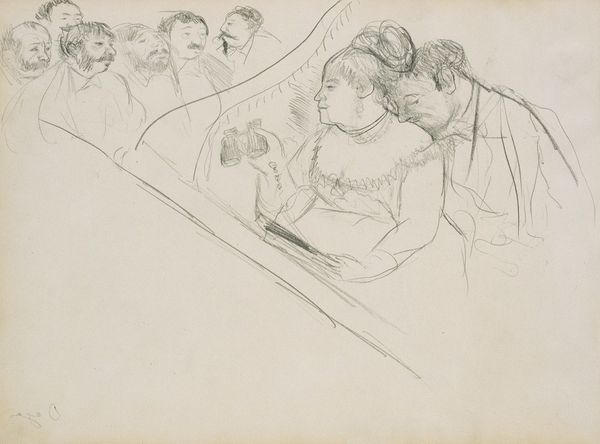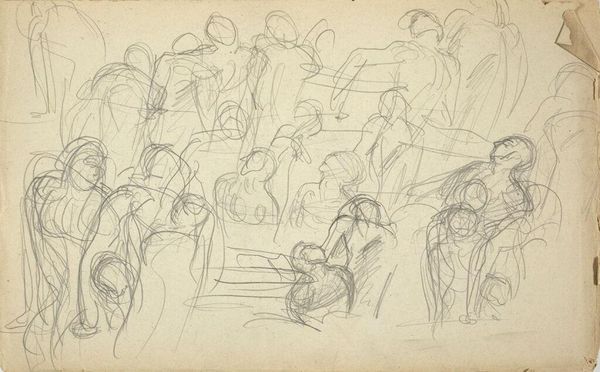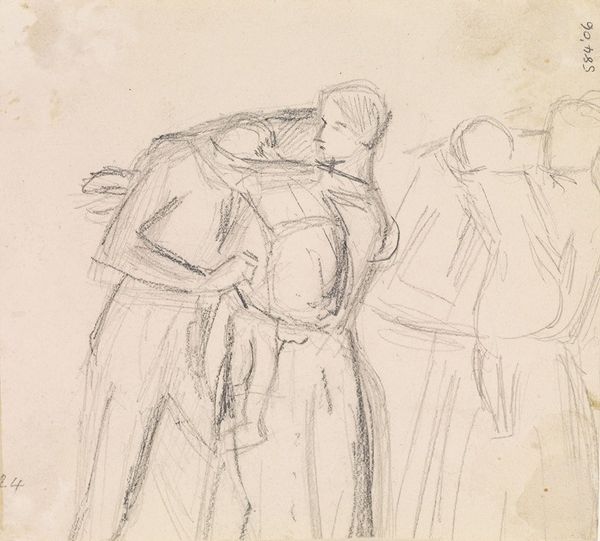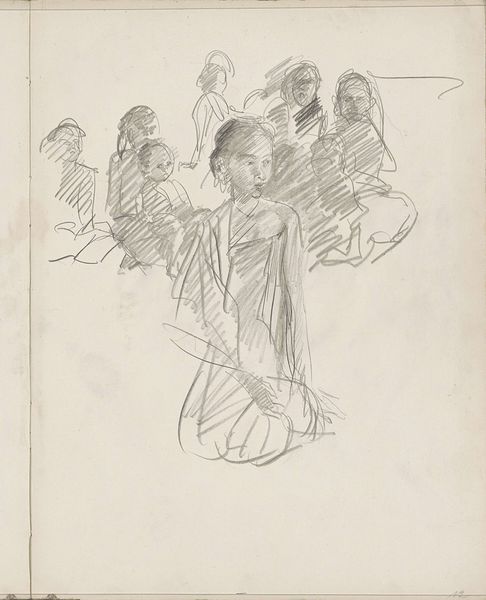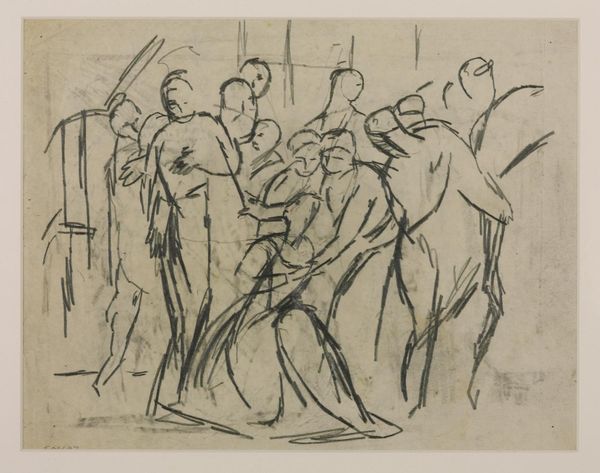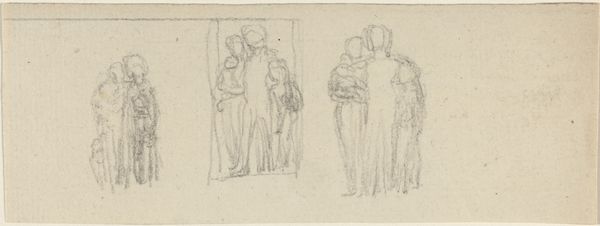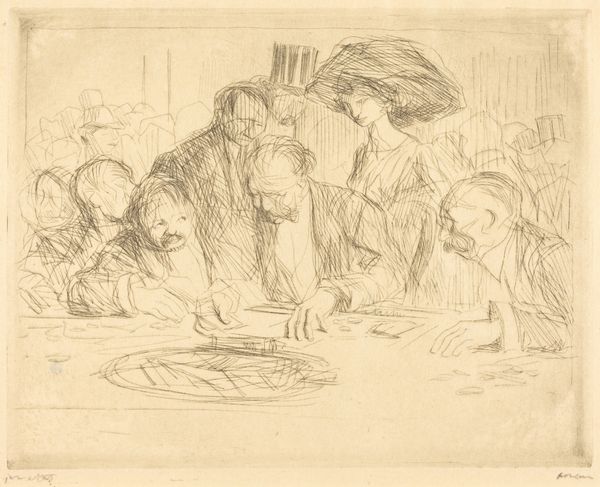
Dimensions: 236 × 305 mm
Copyright: Public Domain
Editor: So, this is Honoré Daumier's "The Spectators," a pencil and charcoal drawing from around 1860-1864. It’s at the Art Institute of Chicago. The mass of faces feels kind of… anonymous, like we’re seeing a crowd's collective gaze rather than individuals. What do you see in this piece? Curator: I see a potent representation of "the crowd," a symbol ripe with cultural anxieties in 19th-century France. Consider how rapidly urban life was changing, bringing more and more people together in shared spaces. What might that collective experience have meant for individual identity? Notice how Daumier obscures the faces closest to us, almost erasing individual features in favor of suggesting the psychological weight of mass consciousness. Editor: That's interesting. So, the lack of distinct features isn't a flaw, but a deliberate choice to convey something about crowds? Curator: Precisely. Think about what they're looking at. The implied spectacle focuses the group’s energy. Are they unified by it? Are they losing themselves in it? Perhaps Daumier is commenting on the allure and the danger of surrendering to collective experience, or perhaps its capacity for something more—shared consciousness, collective agency. Consider that even their posture seems uniform. Do you notice how little the subjects’ lines vary, almost creating a cultural, psychological shorthand of “the masses?" Editor: I see what you mean! It is like they are one entity, watching as one, no diversity. Now it makes me wonder what they're all watching, the central figure that can take away the burden of independent thought… Curator: Exactly! It can open up interpretations beyond just social commentary, maybe into the individual versus society, and the powerful draw of unified focus, in any age. Editor: Wow, I never would have thought of it that way just looking at it. Curator: Visual symbols carry history. Understanding their historical usage opens us up to reflecting on cultural continuity—and discontinuity!—as symbols and symbolic meaning transform with culture.
Comments
No comments
Be the first to comment and join the conversation on the ultimate creative platform.

